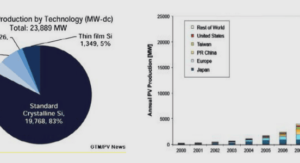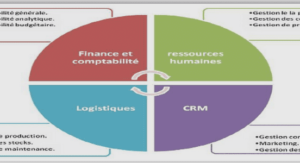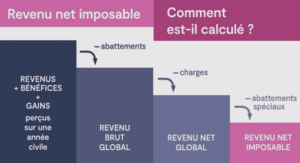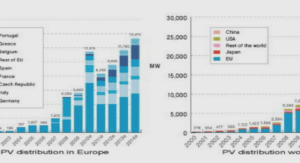Télécharger le fichier original (Mémoire de fin d’études)
Optimization for airport operations
In this section are mentioned the most relevant works which are related to the use of optimization techniques for solving various airport capacity problems.
Aircraft scheduling and sequencing problem
Concerning the problem of the scheduling of landing aircraft, Bennel et al. (2013), made a review about the airport runway scheduling, including the main solution approaches such as dynamic programming, branch and bound, heuristics and meta-heuristics. Beasley et al. (2000) developed a model for tackling the static case, where they formulated a mixed-integer non-zero mathematical model solved optimally using linear programming based tree search and also with a heuristic algorithm based on an “upper bound and restart” strategy. In this context, static means that decisions for flights are made off-line, where the set of aircraft that is going to land is known in advance. In another work of Beasley et al. (2001), the landing aircraft scheduling problem was solved by applying a population heuristic (genetic algorithm). The dynamic case of the landing aircraft scheduling problem was also studied by Beasley et al. (2004); in this context, dynamic, or on-line, means that decisions such as landing time and landing runway were taken by considering the environment changes as time passes. This problem was solved optimally as in their previous work, and furthermore, employing the two heuristic algorithms proposed in their previous works (Beasley et al. 2000, Beasley et al. 2001). The objective of the optimization model was to minimize the total deviation from the scheduled landing time, indicated as delay. Results showed that an optimal exact solution could be found only for small instances of the problem, while applying the two heuristics they could solve the problem effectively. In the work of Bianco et al. (2006), the aircraft scheduling problem was modeled as a deterministic job shop scheduling problem. Moreover, its dynamic version was solved by implementing a heuristic algorithm. The algorithmic approach was based on a fast local search which included also the constrained position shifting (CPS) concept 1. The job-shop scheduling ensured the respect of constraints such as longitudinal and vertical separation between aircraft and other trajectories, while with the implementation of the heuristic, the dynamicity of the problem was taken into account. Another relevant work is the one of Balakrishnan and Chandran (2010) where the problem of scheduling runway operations under constrained position shifting (CPS) was solved by applying a dynamic programming approach. The paper presented different algorithms to solve the aforementioned problem, different objectives were considered such as the minimization of the makespan, minimization of the maximum delay over all aircraft and the minimization of the sum of the delay over all aircraft. Moreover, discrete time models were developed in order to deal with more complex scenarios such as aircraft-dependent cost functions and cases where the triangle inequality2 was violated. The paper extended the methodology also to the case of simultaneous scheduling of arrivals and departures cases.
Hu and Chen (2005), solved the sequencing and scheduling of landing aircraft problem introducing the Receding Horizon Control (RHC) approach. RHC is a N-step ahead search, where a solution for the N-step intervals is taken but it only takes place in the current interval, after that, the same search is repeated for all the other intervals. Results showed that the implementation of this procedure reduced sensibly the computational time and the airborne delay. In the literature, we can find other works that proposed the RHC as a solution approach for aircraft sequencing and/or scheduling problems, Zhan et al. (2010), solved the aircraft sequencing and scheduling (ASS) problem by implementing an ant colony system (ACS); Sama et al. (2013) solved the aircraft scheduling problem by using a branch and bound algorithm; Furini et al. (2015) implemented a rolling horizon approach using a tabu search heuristic to solve the aircraft sequencing problem; in their work they tested different rules for dividing the whole horizon in several windows. Toratani et al. (2015), proposed a receding horizon guidance (RHG) approach to solve the trajectory and sequencing aircraft problem; they solved the problem by proposing a mixed integer linear program. Other works included uncertainty in the sequencing and scheduling problem, like Kapolke et al. (2016), Heidt et al. (2016) and Hong et al. (2017). In Kapolke et al. (2016), the pre-tactical runway scheduling under uncertainty was studied. In pre-tactical planning, decisions for aircraft are taken several hours in advance or up to 30 minutes in advance. Due to this level of abstraction, decision variables of the problem were not about the assignment of the exact arrival times but, instead, they were about the assignment of aircraft into a certain time window of a given size. The uncertainty was included as deviation in the earliest time of arrival windows, the latest time of arrival windows and the maximal latest time of arrival windows. The objective was to minimize the deviation from scheduled times. They adopted three solution approaches: a stochastic, a strict robust, and a recovery to a strict robust. While the strict robust solution appears to be a conservative one, as it represent the most robust solution but obtained at the price of delay/advance time increase, the recovery to strict robust solution proved to be a good trade-off between robustness and conservativism. A similar work was conducted by Heidt et al (2016), in this case they solved the exact runway scheduling problem. They include the uncertainty by considering deviation from estimated time of arrival and departure. The objective and solution approach were similar to Kapolke et al (2016), as they applied a strict robust solution approach and a light version of it by allowing the value of the objective cost function (deviation from scheduled time) to increase by a certain percentage. In separated. For three aircraft in sequence a, b and c, the separation between the first and last in the sequence has to be bigger or equal than the sum of the separation between the first and the second≤ +in sequence∀ ,, and the separation between the second and the last in sequence. Formally is stated as: . 21 the work of Hong et al. (2017), we find a dynamic robust aircraft sequencing and scheduling problem. They applied this to the Point Merge System (PMS) technique, considering uncertainty in the flight time of aircraft. The objective function minimizes the time required for aircraft to reach the merge point and the amount of delay during the final approaching path. After having found a solution by applying a mixed integer linear program to a deterministic version of the problem, uncertainty is included in the solution, and then a heuristic algorithm is employed to find a robust solution. In this work a sliding time window approach is employed in order to reduce the computational time. Results confirmed the effectiveness of the method in dealing with uncertainty, however, the experiments were conducted on a small instance of traffic.
Conflict detection and resolution (CD&R) problem
The conflict detection and resolution (CD&R) is another problem that has been extensively studied; in this context, a conflict is detected anytime the separation minima between two consecutive aircraft is violated. The CD&R problem can be applied to airspace operations (en-route and TMA) and also to ground operations (taxiways, runways). Many researchers have focused on en route conflicts resolution, as we found several studies related to this topic such as Allignol et al. (2016), Hong et al. (2016), Lehouillier et al. (2017), and Hao et al. (2018). In many of these works uncertainty was taken into account as pilot intent and navigation (Hao et al. 2018), wind effect and speed imprecision (Allignol et al. (2016), Lehouillier et al. (2017). The solution approaches for these works span from mix integer program (Lehouillier et al. (2017)), mix integer linear program (Hong et al. (2016)), to metaheuristics such as evolutionary algorithm (Allignol et al. (2016)). To the best of our knowledge, few works focused on conflict detection and resolution in the TMA airspace. Jones et al. (2012), proposed a CD&R algorithm for potential conflicts on runway, taxi and low altitude airspace operations. They evaluated the performance of the algorithm by simulating separately the different airport areas, namely runway, taxiway and low altitude airspace. The work proved to be insightful as it revealed that unnecessary maneuvers were operated by aircraft, as they were caused by unwanted alert triggered due to position inaccuracies. However, one main limitation of this work is that it considers a small number of aircraft involved in the operations. In the work of Zuniga et al. (2011), a genetic algorithm has been applied to solve the CD&R problem in the TMA, taking as control decisions the speeds and the trajectories of aircraft. The objective was to reduce the conflicts to zero while minimizing the deviation of the decision control compared to their initial values. Ruiz et al. (2013), developed medium term conflict detection and resolution, where medium term refers to the time-window for making decisions which is between 20-30 minutes. They considered 4D trajectories, and the solution approaches employed a conflict detection algorithm using time based distances and a conflict resolution algorithm based on vectorizations. In Kuchar and Yang (2000), can be found a review of various modeling methods for the CD&R problem.
Airport surface management
Another problem extensively addressed is the surface management. Atkins et al. (2010) presented a review of the main models implemented for solving various airport ground problems, highlighting the main areas for improvements and future research. Pujet et al. (1999) solved this problem by developing a queueing model, testing different control strategies with the objective of alleviating the congestion on the ground. Taxi times were modelled by a probability distribution, and aircraft were held at the gate during congested period in order to reduce taxi-out times. Simiakis and Balakrishnan (2014) developed a stochastic and dynamic queuing model for the departure process, predicting expected runway schedule and takeoff times, taxi out times and queuing delay. In a similar work, Simaiakis et al. (2014), developed a pushback rate control strategy. The push back rate control strategy consists in identifying the number N of aircraft cleared to push back that corresponds to the maximum runway departure throughput. Beyond this value (N), the departing runway throughput will not increase and, as a consequence, the congestion on the taxiway will increase. The objective of this control strategy is to come up with a push back rate that will not affect negatively the runway throughput and at the same time, that will reduce the congestion on the taxiway. Field tests demonstrated that a good calibration of the control parameter could guarantee reduction in taxi delays and fuel burn. In Evertse and Visser (2017), and Adacher et al. (2017), the airport surface problem was tackled by focusing on environmental aspect, where the objective function was set to minimizing aircraft emissions. This objective is linked with the minimization of ground delays which leads to unnecessary time spent by aircraft with engine on. In Adacher et al. (2017), the solution approach was split into two phases, in the first, taxiway routes are obtained so that delays are minimized, in the second, given the previously calculated routes, the waiting time of aircraft with engine on are minimized. The latter objective is achieved by shifting the waiting time from taxiways to parking areas where engines could remain off. Evertse and Visser (2017) work, is based in a mixed integer linear programming model which is implemented within a time window decomposition approach. In the work of Kang and Hansen (2018), the impact of surface congestion management (SCM) on airlines’ scheduled block times (SBT) was evaluated. SBT is the time in between an aircraft leaves the gate for departing from its origin airport and the time when it arrives at the airport of destination and parks at the gate. The main findings of this work revealed that by applying SCM, SBT could be reduced as a consequence of reductions of taxi out delays. SCM, in this context, was conducted by developing a predicting model by using historical data regarding taxi in/out times and flight times.
Some works focused on the taxi out process with the objective of reducing the congestion on the airport surface. Khadilkar and Balakrishnan (2014) proposed a control algorithm based on the aircraft entry times in the network, trying to minimize the taxi out times of aircraft. The algorithm tried to balance the congestion on the surface while, at the same time, keeping a good throughput performance. In their model, they used actual surface surveillance data and they modelled the travel time on the links of the taxi network in a stochastic way.
In Bohme (2005) it was presented the DMAN concept. DMAN is a tactical departure management tool that was developed by EUROCONTROL and DLR. Its objective is to predict the take off time and to derive from it, the pushback time and/or the engine on start-up. DMAN architecture is based on a modular approach which enables to model different airport scenarios; it includes data-based models for operations, so it can be applied to different airports. The benefits coming from DMAN application are delay reduction, better environmental impact, harmonization of the traffic flow, improvement in the prediction and reliability of schedules. A mixed integer linear program model was presented in the work of Gupta et al. (2009) for the deterministic runway departure scheduling. The model showed good improvements when compared with a FCFS queuing rule and also a fast computational time, although, it has been tested on small samples of aircraft (15 to 20) and for a time horizon of 15 minutes.
Regarding the problem of taxi routing, we can find relevant works that used mainly mixed integer linear program models. Smeltink et al. (2004) developed a mixed-integer program for an optimal taxi scheduling, where for each aircraft were calculated the time for crossing a specific node of the taxiway network. The model considered constraints about minimum and maximum speed on the links, capacity on holding positions, and separation minima between two consecutive aircraft. The objective was to reduce the conflicts and to minimize the sum of taxi times for all aircraft. Due to the size of the problem, the solution approach consisted in a rolling horizon approach where a window of 30 minutes was used for each optimization. A similar work is the one of Roling and Visser (2008), where the taxi process was modeled as a mixed-integer linear programming model, with the objective of minimizing taxi time and holding times. The main difference between this model and the previous one is that it considered taxi rerouting and holdings, and it included also some sources of uncertainty in the expected landing time and pushback time. The work of Montoya et al. (2009) extended the taxi scheduling and routing problem to a multiple route taxi scheduling problem, where besides deciding for each aircraft at which time to be on a certain node, they added an extra decision about the route to take within a predefined set of alternative routes. The problem was solved by a mixed-integer linear program model, and two objective functions were implemented into one objective that minimizes the taxi time and another one that maximizes aircraft departure throughput. In Zou et al. (2018), a two stage scheduling strategy for multiple runways model was developed. The novelties of this work are the inclusion of runway exit availability (REA) in the model, so that it could be decided to which runway exit a landing aircraft would take; and the block-and-hold decision, which allows aircraft to hold along taxiway segment and not only on taxiway intersections. The problem was solved by an iterative integer programming model, with the objective of minimizing the total taxi time of the flights.
Some studies focused on the integration of ground operations such as runway and surface operations together, as in the work of Deau et al. (2009) where it is stressed the connection between runway operations (departure manager-DMAN) and surface operation (surface manager-SMAN). In their tests, they found out that the ground delay performance when considering only runway operations is less impacted when considering also constraints coming from the ground operations. In their work, they highlighted the benefits from the integrated implementation of these operations and also the complexity derived from them. In the work of Benlic et al. (2016) an integrated runway sequencing and taxiway routing problem was proposed. The applied a receding horizon approach and solved the problem by applying a local search heuristic. A follow up of this work is given in Brownlee et al. (2018), where they addressed the same problem by including uncertainty. Uncertainty was included by an adapted fuzzy method to estimate taxi times, and the problem was solved by the quickest path problem with time windows (QPPTW) algorithm. Results revealed that, although taxi times increased due to a more conservative solution, taxi delays have been reduced compared with a solution obtained by a QPPTW algorithm without uncertainty included.
Integration of airspace and ground operations
Bertsimas and Frankovich (2015), tackled the problem of unifying TMA and ground operations. They divided the integrated problem into two phases, where in a first phase they took decision about runway configuration and aircraft sequencing, and in the second phase decision regarding ground operations such as gate-holding and taxi routing. They solved both problems using a binary optimization model, achieving good results in terms of computational performance and operational performance. One limitation of this work was that they used deterministic data, and therefore, they were not considering the uncertainty that affects the problem. Another limitation resides in the fact that all the decisions were taken inside the same time frame, which in reality might be unfeasible due to the nature of the different operations. To be more precise, airspace and ground operations require a different decisional time frame, since airspace decision are more tactical (runway configuration, aircraft sequencing) and ground decision are more operative (gate-holding, taxi routing). In the work of Bosson et al. (2015), taxiway and runway operations were integrated with an arrival and departure operations in the terminal airspace. In their model, they modeled uncertainty as pushback delay and arrival gate delay; the objective of the problem was to maximize on-time performance by reducing gate waiting time and the total travel time in the air and on the surface. The problem was modelled as a mixed-integer linear program and solved by a an algorithm -based scheduler. In Guepet et al. (2017) the same problem was tackled by proposing a heuristic sequential approach where first, the earliest take off times and arrival time at the stand were estimated, second, the take off sequence was created based on the takeoff times given by the first step, and third, aircraft were routed on the taxiway based on the sequence given by the second step. Another contribution of this work was that it considered in the operation also conflicts at the stand area. Sama et al. (2017), addressed the problem of coordinating ground and airspace operations, by developing and solving an mixed integer linear programming model and by applying two different heuristics: one based on a branch and bound algorithm, and another one based on a fast greedy algorithm. They tested different policies for air traffic controllers for landing and departing aircraft, and assessed different indicators such as: runway throughput, approach time (landing), air traffic controllers’ workload and taxi time. The authors stressed the importance of coordinating airspace and ground operations in order to avoid inefficiencies and to improve overall performance. Serhan et al. (2018), tackled the same problem but the put focus on airline and passenger delay cost in their optimization model. They solve the problem by applying a mix integer nonlinear programing model and swap position violating aircraft heuristic model. In their work they evaluated the impact of changing cost parameters on flight schedules, delays and runway makespan. Badrinath et al. (2019), developed a queuing model for the ground operations and extended it to the departure phase, by incorporating airspace departing routes. The queuing model was able to predict congestion in different areas of the ground such as ramps, taxiways and runways. In their model, they considered different factors in their model such as: runway configurations, weather and en route traffic.
Gate assignment problem
The gate assignment is another problem that was studied by researchers. In this problem, the main objective is to make a robust assignment, where robust assignment is defined as the capability of making the gate assignment insensitive to variations in flight schedules (Bolat, 2000). One effective way of making the gate assignment robust is to maximize the idle time between two consecutive aircraft assigned to the same gate. Bolat (2000), solved this problem by formulating a mixed-quadratic binary model with the objective of minimize the variance of the idle time at gates. The model was solved by applying a branch and bound algorithm and then with different heuristics for bigger instances of the problem. The heuristics were based on dynamic priority functions to guide the gate assignment. Ding et al. (2005), solved the over-constrained gate assignment problem, where we have more aircraft than gates. The first objective is to minimize the number of aircraft non assigned to a gate, and the second objective is to minimize the passenger’ walking distance inside the terminal. They solved the problem applying first a greedy algorithm to minimize non assigned flights, and then employed two heuristics for improving the second objective. The two heuristics are the simulated annealing and a hybrid simulated annealing with tabu search approach. A similar objective was set in the work of Dell’Orco et al. (2017), where the minimization of assign aircraft to remote gates was proposed together with the minimization of the passengers’ walking distance. The problem was solved by the use of metaheuristic, the fuzzy bee colony Optimization (FBCO). In Kim et al. (2011), the robust gate assignment was solved by setting as objective, the expected level of disturbance. In this framework, the level of disturbance was defined as the time overlap due to delayed departure or earlier arrivals at the gate, for two consecutive aircraft that are assigned to the same gate at different times. The problem was modelled as a linear mixed 0-1 problem and was solved optimally and also by the implementation of a tabu search meta-heuristic. Genc et al. (2012), focused on the maximum gate employment, which aims at maximizing the time spent by aircraft at gates (increase gate utilization), and minimize non assigned aircraft to gates. They developed a method that uses heuristics in combination with a stochastic approach. With the former, they can obtain a solution in a fast time, while with the latter they can improve the quality of the solution. Van Schaijk and Visser (2017), developed a robust flight-to-gate assignment with the objective of minimizing the occurrences of re-planning due to flight uncertainties, They included in set of the constraints a new stochastic one, which defines that the probability of having two aircraft scheduled at the same gate and at the same gate does not exceed a certain value. A binary integer programming model was developed in order to solve the problem. Gate assignment robustness was evaluated also in the work of Zhang et al. (2017), where they estimated the probability of having conflicts at gates, analogously as van Schaijk and Visser (2017). They solved the problem by applying the biogeography-based optimization (BBO) algorithm. In the review of Dorndorf et al. (2007) there is a large variety of mathematical models and solution approaches for the gate assignment problem.
The topic of this thesis covers the integration of airport airspace and ground operations. Similar to the work of Bertsimas and Frankovich (2015), Sama et al. (2017) and Serhan (2018), the operations involved are the ones in the TMA airspace and the ones on the ground. The main difference with their work is that operations are not split in two phases as in Bertsimas and Frankovich (2015), but they are integrated. Moreover, the two phases, airspace and ground, are not modeled as microscopic models as in Sama et al. (2017) and Serhan et al. (2018), but as a macroscopic model. For instance, in the two-phase model of Bertsimas and Frankovich (2015), in the first phase, decisions are generated for the runway configuration selection and aircraft sequencing in the TMA, while in the second phase decisions are generated for the ground. In this thesis, the operations were integrated and all the decision were taken within the same time frame. The main limitation of the work of Bertsimas and Frankovich (2015) is linked to the way they considered the decision making time frame, for airspace and ground. Considering that tactical decisions for the aircraft sequencing in the TMA can be done even two hours in advance, it is clear that within this time frame it is not relevant to know in detail what happens on the ground due to the high uncertainty. On the other hand, if operative decisions such as aircraft taxiing must be made, a smaller time frame, even five minutes in advance should be applied so that there is less uncertainty. These two different type of decision making, tactical and operative, and the different time frame considered, can help defining two abstraction levels for modelling airport operations, having macroscopic and microscopic level (Sama et al. (2017) and Serhan et al. (2018)), respectively. In this thesis, a macroscopic model was developed for which both decisions for airspace and ground were made within the same time frame, and the same level of abstraction was implemented. In this macroscopic level of abstraction, the performance of the ground are not evaluated considering flight-by-flight, but by considering the performance of the overall system. In this context, ground operations are modeled in low detail, by identifying the main ground components and considering them as resources characterized by limited capacity. The main objective here becomes the mitigation of the overall ground congestion. In this way, uncertainty related to ground operation can be reduced compared to Bertsimas and Frankovich (2015), and a more consistent and realistic unified approach for airspace and ground operations can be implemented. Moreover, another gap found in Bertsimas and Frankovich (2015) was that the operations were modeled in a deterministic way, by not addressing the uncertainty related to these kinds of operations. This thesis tries to close this gap by including different sources of uncertainty by coupling optimization techniques together with simulation techniques. The problem tackled in this thesis, falls also in the category of the CD&R problem, since the main objective of the problem is to find a sequence of aircraft in the TMA without any conflict, however, in this thesis, the concept of conflict has been extended also to the ground operations by defining ground conflicts as well.
In general terms, the studies reviewed so far presented the following assumptions/limitations: some of them considered only small instances of the problem, and this is due to the complexity of the problem for bigger instances; some of them considered the problem as deterministic. These assumptions represent limitations for the application of these models to real world instances, this fact motivates the research of this thesis to focus on overcoming these limitations.
Simulation approaches for airport operations
The progress of technology regarding computer science has allowed researchers and practitioners to develop advanced simulation models that serve as support in training, decision making, planning, and scenario evaluation for strategic, tactic and operative operations in many different fields. As evidence of this trend, Brunner et al. (1998), pointed out that the use of simulation in transportation increased dramatically, and in their publications, they included a review regarding opportunities and barriers for its further development. Concerning the application of simulation techniques in the aviation field, and specifically to airport operations, many airport simulation models were developed through the years. Many of these models represent specific operations and areas of airports such as airspace, airside and terminal operations. Recently, research efforts have focused on the integration of some of these airport operations in order to take into account also their interactions, which, on the one hand permits to make a more precise and reliable analysis, but on the other hand, it increases the complexity of the model. In the report of Odoni et al. (1997), there was an extensive survey on the existing airport simulation models. In their report, they made a classification between airport models, which was based on the level of detail and purpose. They classified airport simulation models into: macroscopic (strategical), mesoscopic (strategical) and microscopic (tactical). A more recent review of simulation application for airport system was made by Ran et al. (2013). In this review they highlighted the potential developments and shortages for simulation applications. In their work, they concluded that simulation models for airport systems should integrate operations from different areas, such as terminal and airfield, and do not limit the scope to the analysis of specific areas. Moreover, there is a need of a more user friendly software interface and the development of virtual reality to make the simulation closer to reality and to improve the man-machine interaction.
Another classification of simulation models is made based on the type of simulation software used, having models created with specific purpose simulation software or with general purpose simulation software. The first category implies that the model is developed and used only for a specific field of interest. General purpose simulation software, on the other hand, are constituted by a simulation engine, it can be discrete event simulation (DES) or agent based simulation (ABS), and include some predefined general objects that can be used by the developers to create any kind of model for any kind of field of interest. DES is a simulation paradigm where time passes based on specific events, and not based on fixed time intervals. In this paradigm, the state of the system changes based on the occurrences of these specific events. ABS is a simulation paradigm, where time passes according to a specific time interval and the entities (agents) are built with their own logic, so that the system state changes based on the actions and interactions of the agents. Usually, models for airspace and airside are simulated using DES due to the fact that in these models, the sequence of actions for the entities (events), in this case aircraft, is already defined (e.g. airspace routes, taxiway routes). Models for airport terminals, where passengers are the entities simulated (agents), generally use ABS because the models need to recreate the different logic of each passenger that behave according to his own plan and also according to the interactions that he/she has with the surrounding environment. Generally, building a model by using specific purpose simulation software is easier due to the fact that the simulation framework offers already the objects needed for the specific type of operations; on the other hand, building the same model by using a general purpose simulation software might be more difficult and time consuming due to the fact that the developer needs to create all the objects and logic from scratch. General purpose simulation software are more flexible because the developer has more freedom in building the system logic, while for specific purpose simulation software, the developer is limited to the properties and functionalities of the predefined objects included in the software. However, nowadays, many specific simulation software are being developed as open source, in such a way that developers are free to get access to the code behind the software and be able to extend them based on their requirements. In table 2.1 the main advantages of using general-purpose and specific-purpose are summarized.
In the next two sections, a literature review of airport simulation models using general and specific purpose simulation software is presented.
Specific-purpose simulation applications
One of the most relevant and used airport modeling tool is SIMMOD, developed by the FAA. SIMMOD is a simulation software that allows to represent and model the operations of airport airspace and ground side. It is classified as a microscopic airport simulation model, since it models the airport operations in detail (SIMMOD PRO, 2018). SIMMOD has been widely used in many applications and studies (Delcaire and Feron, 1997), (Kleinman and Hill, 1998), and (Wei and Siyuan, 2010). Other airport simulation software that can be found on the market are: FACET (Bilimoria et al., 2000) and BlueSky (Hoekstra and Ellerbroek, 2016), focusing mainly on airspace operations, AirTop (Transoft solutions, 2018) and CAST (Airport Research Center, 2018) which include different modules for modelling airspace, airside and terminal operations, TAAM (Jeppesen, 2018) and RAMS (Innovation for Sustainable Aviation, 2018) that simulate airspace and airside operations and AirSim (Productivity Apex, 2018) that is limited to the modeling and simulation of passenger flow inside airport terminal. Some of these airport simulation models are based on DES or ABS. Other airspace simulation model applications can be found like in the work of Zheng et al. (2015), where an ABS model was developed to simulate the main actors in the air traffic management such as aircraft, air traffic controller and ATC automation system. In their model, the interactions between the agents were modelled such as communications, surveillance and instructions and it results showed the ability of the model to work as a planning tool for air route network, sectors and flight plans, and for evaluating the ATC workload. Klein (2017) proposed a simulation model to evaluate the impact of the weather for strategic and tactical airspace applications. Based on different weather forecast scenarios, they were able to give instructions to aircraft for trajectory change in order to minimize ground and airspace delays, cancellations and diversions. Simulation models for ground applications can be found in the work of Chua et al. (2014), where a simulation model of taxing operations was developed within the framework of the project Modern Taxiing. The model was used as decision support system to assist ground traffic controllers in taxiing path suggestions and conflict detection. Kern and Schultz (2016), developed a model for evaluating the capacity of a standard single runway considering different arrival-departure rates, aircraft mix, and runway infrastructure.
Table des matières
Chapter 1 Introduction
1.1. Background and motivation
1.2. Airport characteristics and related operations
1.2.1. Airport definition and role
1.2.2. Airport classifications
1.2.3. Airport stakeholders
1.2.4. Airport sections
1.2.4.1. Landside
1.2.4.2. Airside
1.3. TMA airspace
1.4. Thesis contributions
1.5 Thesis outline
Chapter 2 Literature review
2.1. Optimization for airport operations
2.1.1. Aircraft scheduling and sequencing problem
2.1.2. Conflict detection and resolution (CD&R) problem
2.1.3. Airport surface management
2.1.4. Integration of airspace and ground operations
2.1.5. Gate assignment problem
2.2. Simulation approaches for airport operations
2.2.1. Specific-purpose simulation applications
2.2.2. General-purpose simulation applications
2.3. Optimization-Simulation solutions for airport operations
Chapter 3 Problem description, modeling and general solution approach
3.1. Airport operations at a macroscopic level
3.1.1. Operations description and modeling
3.1.2. Model assumptions
3.1.3. Optimization model
3.1.3.1. Decision variables
3.1.3.2. Objective and constraints
3.1.4. Model uncertainty
3.2. General architecture of the Opt-sim approach
3.2.1. Sliding window approach
3.2.2. Optimization by simulated annealing
3.2.3. Simulating by discrete event simulation
3.2.3.1. Simulation model of airport operations at a macroscopic level
3.3. Methodological approach for combining simulation together with optimization
3.3.1. Opt-sim method 1: ex post optimization
3.3.2. Opt-Sim method 2: Algorithmic approach for a continuous improvement of the solution
3.4. Conclusion
Chapter 4 Experiment on a real case study: Paris Charles de Gaulle Airport
4.1. Implementation of Opt-Sim method 1
4.1.1. Scenarios and results
4.1.1.1. Default scenario results
4.1.1.2. Results from scenario 1 and 2
4.2. Implementation of Opt-Sim method 2
4.2.1. Parameter setting for the Opt-Sim Method 2
4.2.2. Scenarios
4.2.3. Results
4.2.3.1. Default scenario
4.2.3.2. Alpha scenario
4.2.3.3. Separation minima increase scenario
4.2.3.4. Objective function weight scenario
4.2.3.5. Comparison between the scenarios
4.3. Conclusion
Chapter 5 Conclusion and future work
5.1. Conclusion
5.2. Future work
Bibliography
Appendix A: Simulation model of the Opt-sim method 1 (SIMIO)
Appendix B: Simulation model of the Opt-sim method 2 (Anylogic)





